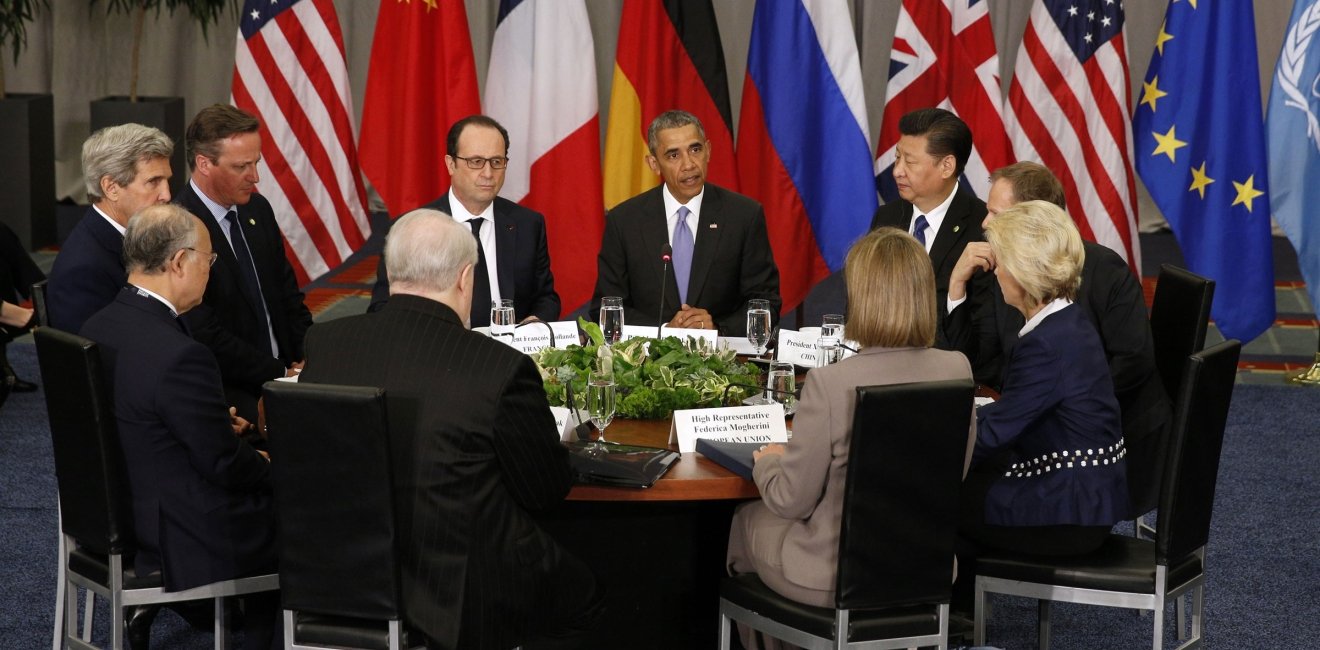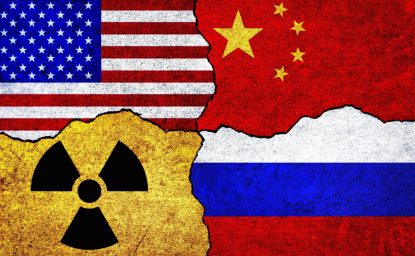North Korea, Nuclear Safety, and Lessons From the Iran Deal
For a long time many said that Iran does not respond to pressure. But without pressure Iran does not respond, writes Robert Litwak.
For a long time many said that Iran does not respond to pressure. But without pressure Iran does not respond, writes Robert Litwak.

North Korea’s missile test Friday highlighted the threat discussed by President Barack Obama, Chinese President Xi Jinping, and others gathered at the Nuclear Security Summit.
Since 2010 these meetings have spearheaded progress in securing some 2,000 tons of weapons-grade nuclear material around the world, with the goal of denying terrorist groups such as Islamic State the essential component to build a weapon. Still, much work remains to secure nuclear material in the former Soviet republics, South Africa, and elsewhere. And theft or purchase of a weapon are the more immediately plausible routes of terrorist acquisition.
Concern about these two routes to nuclearization focuses on Pakistan and North Korea. Pakistan has the world’s fastest-growing nuclear arsenal, according to the Stockholm International Peace Research Institute. It is developing small, low-yield tactical nuclear weapons potentially for use against India. Their size and portability makes these weapons vulnerable to theft, whether by rogue commanders or other forces. President Obama said in 2009 that the Pakistani nuclear arsenal was secure but administration officials no longer offers such assurances, the New York Times reported this week.
In North Korea, there is more to worry about than the regime’s threats to use weapons. The government in Pyongyang is desperate for funds to maintain the lifestyle of Kim Jong Un and his cronies. The regime needs to raise about $1 billion a year, estimates David Asher of the Center for a New American Security. For the right price, the North Koreans might sell anything to anyone. And Pyongyang’s arsenal of a dozen weapons is poised to surge to as many as 100 weapons by 2020.
The North Korean and Pakistani nuclear weapons programs have advanced to such a point that a full rollback to zero weapons is not politically feasible. A more realistic focus would be to freeze the North Korean and Pakistani nuclear arsenals so that the problem does not get worse, to persuade Pakistan forego the deployment of vulnerable tactical systems, and to secure weapons in both countries.
Pyongyang has insisted, as a precondition for renewing diplomatic talks, that it be accepted as a nuclear-weapons state. Washington has rejected this position. But U.S. “strategic patience” during this stalemate has essentially translated into acquiescence as North Korea builds its arsenal. Meanwhile, Pakistan has so far rebuffed U.S. diplomatic overtures, which included an offer to treat Pakistan on par with India with respect to nuclear commerce if it addressed U.S. concerns about its nuclear safety.
There has been broad acknowledgement this week that these are global threats and problems. President Obama’s bilateral meeting with President Xi Jinping was one occasion to discuss specific strategies. In an op-ed ahead of the summit, President Obama cited recent Chinese-backed United Nations sanctions on the Pyongyang regime for its nuclear and ballistic missile tests as a precedent for international cooperation to meet proliferation threats.
There is a model for potential progress. For years, Iran’s nuclear program was seen as an intractable issue. Eventually, economic pressure and diplomatic engagement led to the international agreement last year on Tehran’s nuclear program. That deal sparked controversy, but it has, at minimum, added years to Iran’s pathway to a bomb. For a long time many said that Iran does not respond to pressure. But without pressure Iran does not respond. The same holds for these other seemingly intractable cases. The U.N. sanctions on North Korea are a start; enforcement, including Chinese help to ramp up pressure, will be key in helping to break the impasse.
The opinions expressed here are solely those of the author.
This article was originally published in The Wall Street Journal's Think Tank blog.


